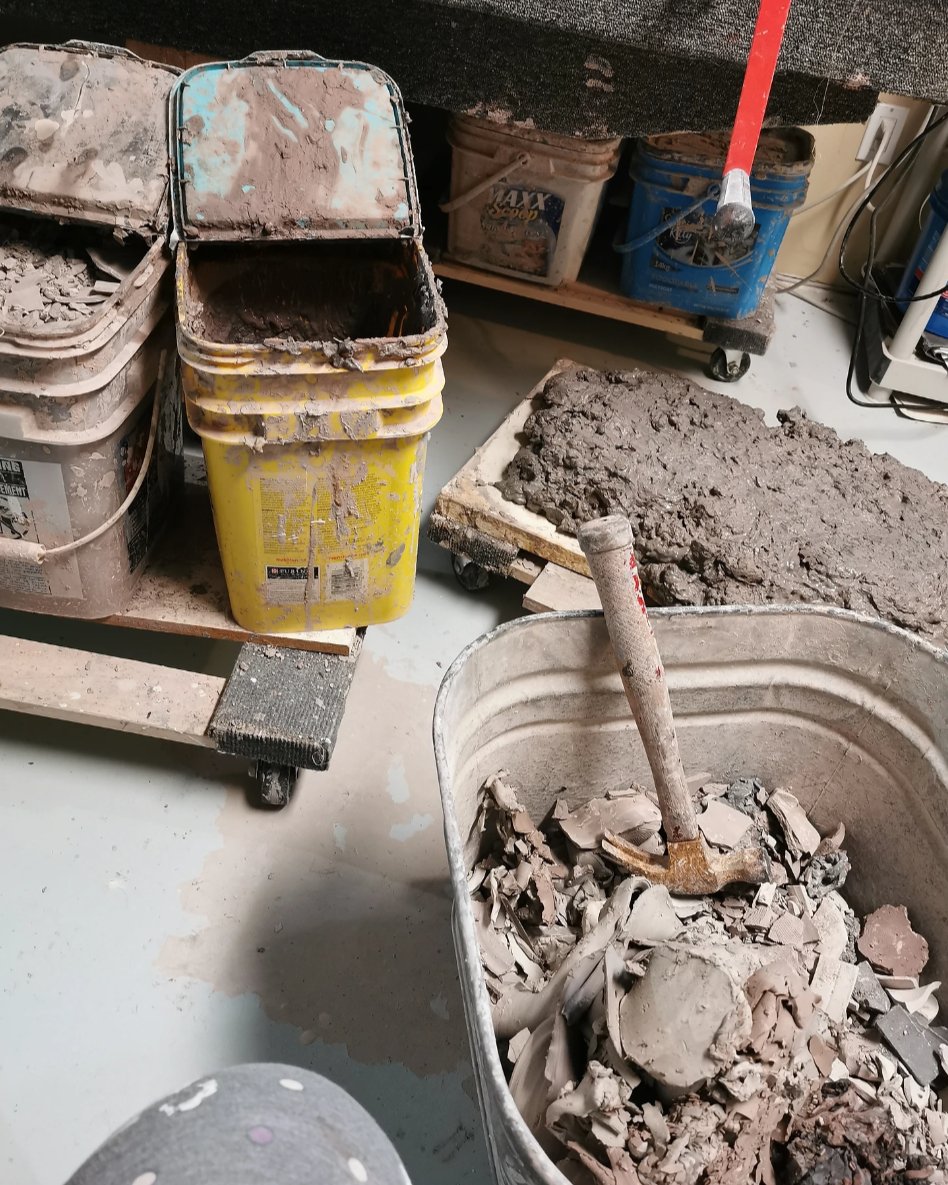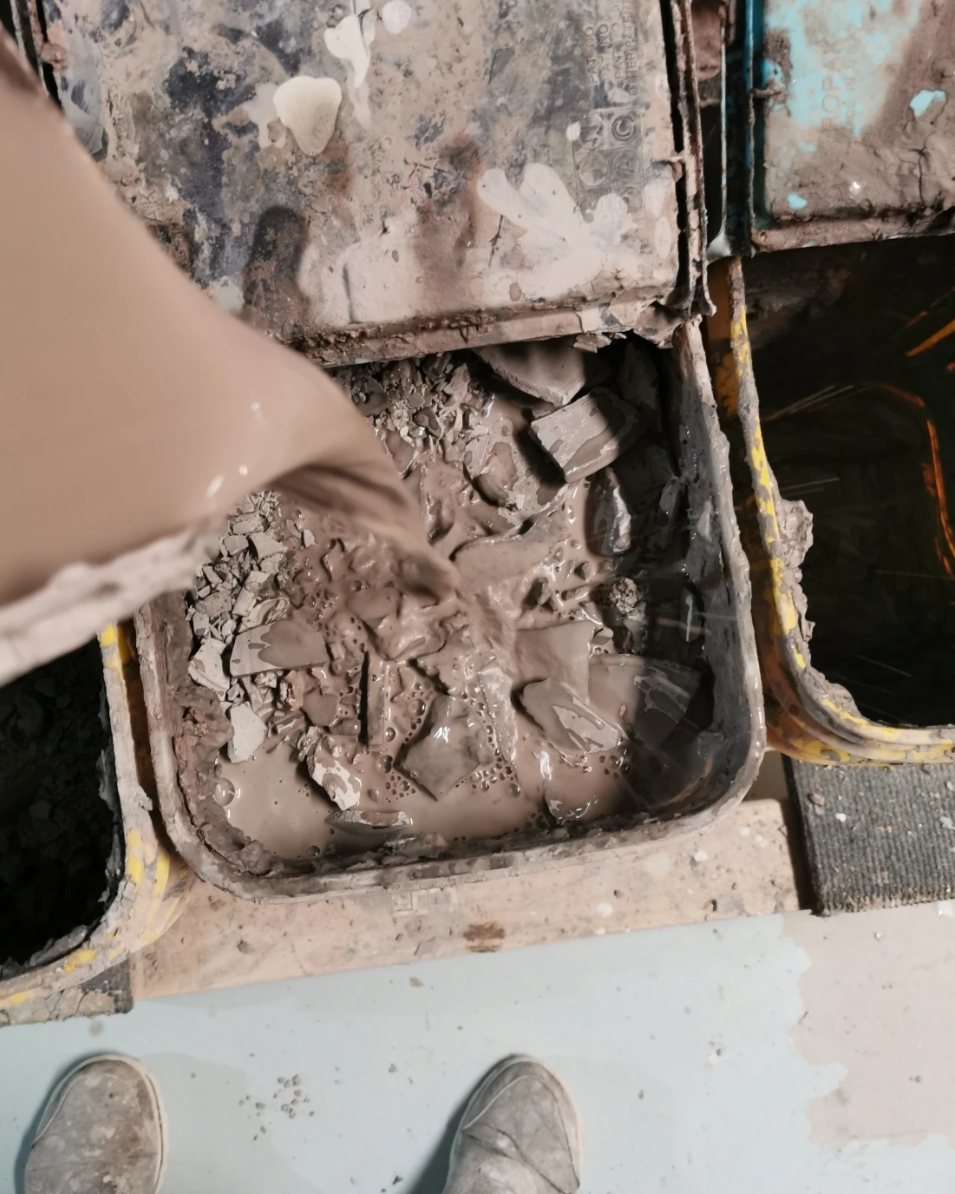by Anna Karch
originally created for Art Create Learn Magazine’s Fall 2023 issue
As our world becomes increasingly environmentally conscious, we as global citizens become more and more invested in finding sustainable solutions and alternatives to problems and activities in our lives. While recycling paper and plastic, turning off running water, and closing the lights when they’re not in use are typical habit changes recommended to enable an environmentally proactive lifestyle, what kind of eco-friendly steps can we take to make art more sustainable? To find out, we talked to two local Windsor-Essex artists—pottery artist Gisele Bick and mixed-media collage artist Julie A. Bell.
What is Sustainability in Art?
Gisele states that sustainability in art means “adopting practices that prioritize environment, social, and economic factors for the long-term benefit of both the art form and the community; it involves striving for balance between creative expression and resource utilization.” Similarly, Julie highlights the importance of resource usage and choice, stating that “a lot of art practices have changed in the last decades to become more mindful of both consumption of raw materials and the use of dangerous chemicals and pigments.”
In pottery, this can look like using local materials and working to minimize waste. For example, the clay Gisele buys comes from within Ontario, which means that greenhouse gas emissions that would otherwise be produced in long-distance transportation are reduced. At her studio, Gisele makes the most of the material: she plans and measures the amount she uses prior to starting a project, and she works with recycled water to revive and reuse leftover clay trimmings post-project. She furthermore opts for non-toxic and eco-friendly glaze materials.
For mixed media collage arts, Julie frequently incorporates a lot of found and up-cycled materials into her work, such as “newspapers, flyers, old magazines, maps, flattened boxes and containers.” She is a collector of the detritus, or debris, of consumer culture; things left behind as waste are reused and given a new, lasting life in art.
“Speaking of Gardens” by Julie A. Bell. (Image credit: Julie A. Bell at Instagram.)
the Creation Process
In addition to material mindfulness (the choice, use, and proper disposal of art resources), the creation process itself as a whole plays a big role in eco-friendly art. While what we choose to use is always in front of us, part of conscious thought, the other decisions we make during the creation process may occur on a more subconscious, habitual level. What are these decisions and how can they be adjusted to reflect environmentally-friendly values? Answers will vary as different artists have different routines, but there are a few commonly used resources—namely electricity and water—that can benefit from changes in how they're utilized.
Electricity is a major resource in the 21st century; we need it for almost everything, art included. In Gisele’s studio, her kiln, which is a thermally insulated chamber that hardens clay into pottery, uses electricity to reach its high temperatures. Conscious of this, she “ensure[s] that [her] kilns and other equipment are energy-efficient, reducing their overall environmental impact.” Furthermore, she “schedule[s] firings to optimize kiln usage” and “always turn[s] off lights and equipment when not in use.”
Water is another resource heavily implicated in art, whether it’s used to mix mediums or clean up afterwards. In the case of pottery, Gisele recognizes that it’s a fairly water-reliant art form; water is used to soften and manipulate clay, to create glazes, and to clean. To make the most of it, Gisele incorporates “water-saving techniques, such as using a misting bottle for moistening clay instead of continuously running water, and recycling water where possible.” To recycle water, several buckets are used as a filtration system in which, over time, sediment settles at the bottom and clean water rises to the top.
Planters, Bonnie and Amy, from G-Pots Studio. (Image Credit: The G-Pots Studio Facebook Page.)
Mindfulness and Balance
Ultimately, sustainability in art is created through mindfulness and balance. When we take thoughtful inventory of our materials and processes, we become eco-conscious, and that shift can help us identify places for improvement—whether that means investing in energy-efficient equipment, recycling proactively, sourcing alternative eco-friendly materials, or minimizing overall consumption. Most importantly, any changes made must be sustainable for the artist themselves; a balance must be struck between environmental, economic, and social values, as Gisele said. Positive changes, after all, are most effective when they're long-term changes.








